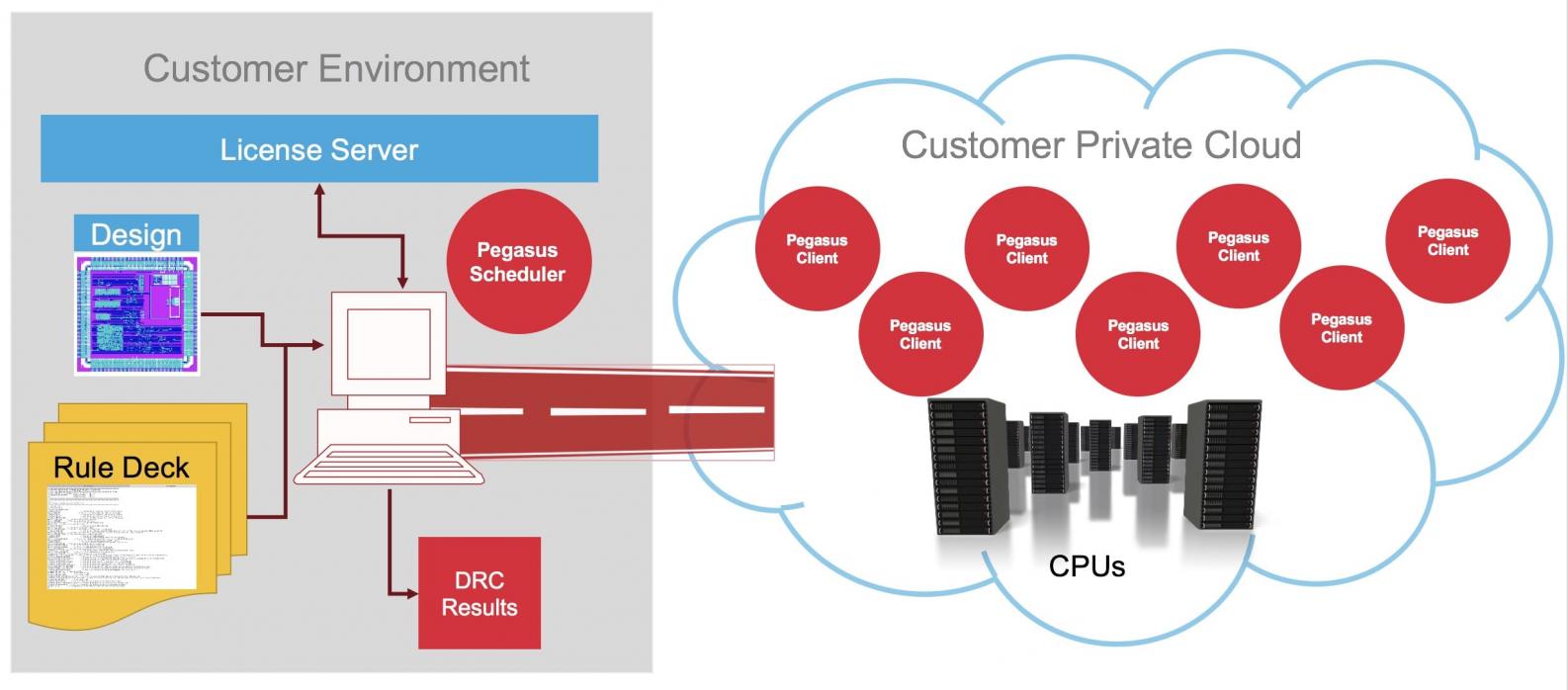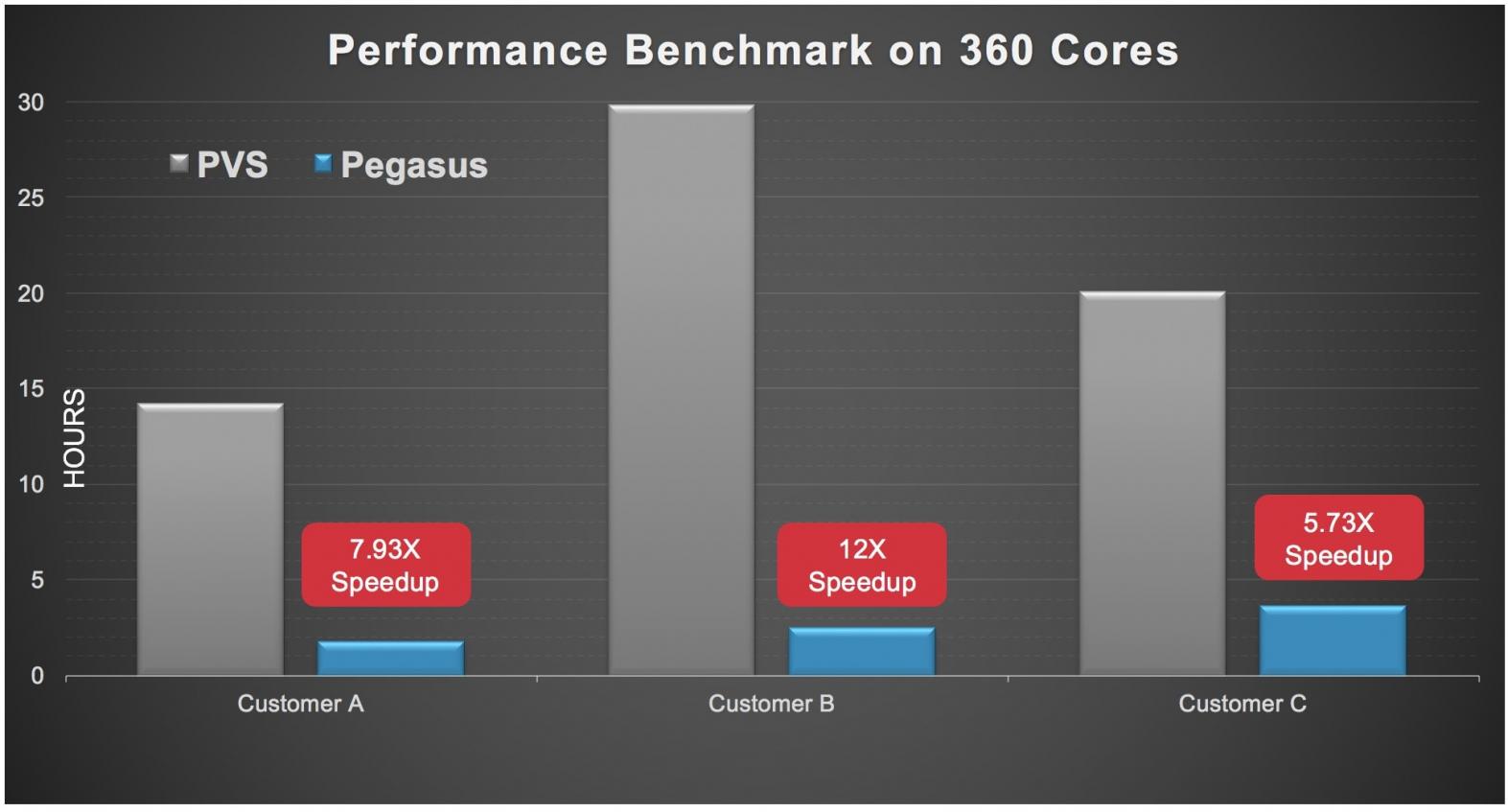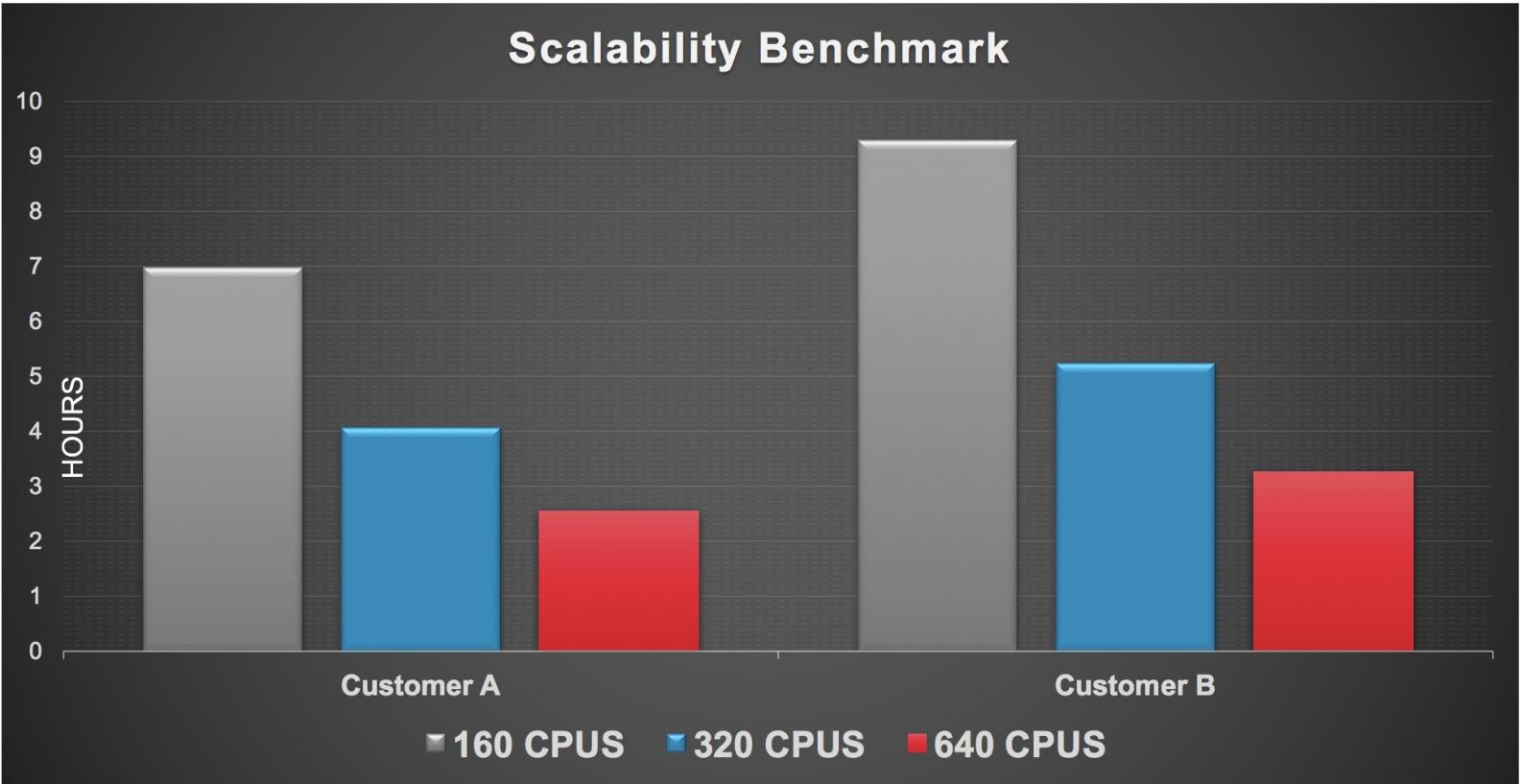Back in the day the Dracula tool from Cadence was king of the DRC and LVS world for physical IC verification, however more recently we’ve seen Calibre from Mentor Graphics as the leader in this realm. Cadence wanted to reclaim their earlier prominence in physical verification so they had to come out with something different to meet the ever increasing challenges:
- 10/7nm – 7,000 DRC rules, 40,000 operations
- 16nm DRC signoff – more than 4 days to run
- Poor scalability with physical verification tools
Instead of acquiring a start-up, management at Cadence decided to have engineering develop a new DRC/LVS tool from scratch to meet these challenges, and they named the new product Pegasus. If you’ve been keeping track of recent Cadence products there’s a common naming theme: Voltus, Innovus, Genus, Modus, Stratus, Tempus. Some non-conforming new product names: Xcelium, Joules, Indago.
Other DRC/LVS tools use multi-threading, however they really aren’t scaling well beyond a few hundred CPUs, so here are the three big differences with Pegasus:
[LIST=1]

Cadence’s 2nd generation of DRC/LVS tools were Assura and PVS that handled hierarchy and used multi-threading, which worked OK in terms of turn around time for many process nodes. With Pegasus you can expect to get runs back about 10X faster than with PVS, and it accomplishes this using three technologies:
- Stream processing – don’t wait to read in entire GDSII before starting to run DRC/LVS
- Data flow architecture – scales well up to 960 cores
- Massively Parallel Pipelined infrastructure – customer private cloud
What this means to the end user is much shortened DRC runtimes that used to take days are now completed in hours. Companies like Google made stream processing famous in their search engine approach, Facebook is the most well-known company to use a data flow architecture, and finally Amazon has mastered cloud computing. So Cadence took their new product development ideas for Pegasus from outside of traditional EDA thinking.
Related blog – Simulation Done Faster
With the old approach of multi-threading you needed to have a huge master machine, while with Pegasus you don’t need that any more and the Pegasus scheduler can setup 1,000,000 separate threads for use by all nodes in your cloud.
So just how fast can you expect to get results from Pegasus compared to PVS? The following chart shows three customer designs run on 360 cores:

How about scalability? This next chart shows a couple of designs run through Pegasus using 160, 320 and 640 CPUs:

Cadence customers using Virtuoso or Innovus will be please to learn that Pegasus works natively with each tool, and benefits to Virtuoso users of Pegasus include:
- In memory integration, no stream out and stream in
- Dynamically detect the creation, editing and deletion of objects
- Instantaneous DRC checks
- Uses the standard foundry-certified PVS deck
Related blog – Making Functional Simulation Faster with a Parallel Approach
I asked Christen Decoin at Cadence about repeatability and rotated designs, and he assured me that results are consistent between runs and it doesn’t matter if you rotate the layout.
Summary
The EDA world never remains constant, there are always new challengers for each tool category, and the team at Cadence has achieved something quite note-worthy with the introduction of Pegasus for SoC designers that cannot afford to wait 4 days or more for their DRC runs to get through sign-off. Even if you need to get blocks pushed through DRC faster, then any new tool that promises a 10X improvement is certainly worth looking into. Texas Instruments and Microsemi have talked publicly about using Pegasus for their DRC/LVS tool.
The marketing folks at Cadence even got a bit artistic with their graphics for Pegasus and the tagline: Let Your DRC Fly








Comments
0 Replies to “A New Product for DRC and LVS that Lives in the Cloud”
You must register or log in to view/post comments.